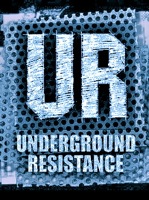Resistance
Definition
- b. Organized covert opposition to an occupying or ruling power; spec. (usu. with def. article and capital initial) in the war of 1939-45, the underground movement formed in France (see Description) in June 1940 with the object of resisting the authority of the German occupying forces and the Vichy government; any organization of this type with similar ends.
- 2. a. Power or capacity of resisting.
- b. Psychoanalysis. Opposition, freq. unconscious, to allowing memories or desires which have been repressed as unacceptable or disruptive to emerge into the conscious mind.
- c. In Comb. with a preceding n., as crease resistance, resistance to creasing, etc.
- b. esp. in the physical sciences, the opposition offered by one body to the pressure or movement of another.
- c. Hence line of resistance.
- d. line, etc., of least resistance:;, the easiest method or course of action.
- 4. a. Non-conductivity in respect of electricity, magnetism, or heat; spec. resistance to an unvarying electric current.
- b. A part of an electrical apparatus used to offer a definite resistance to a current, a resistor.
Description
Resistance during World War II occurred in every occupied country by a variety of means, ranging from non-cooperation, disinformation and propaganda to hiding crashed pilots and even to outright warfare and the recapturing of towns. Resistance movements are sometimes also referred to as "the underground".
Among the most notable resistance movements were the Yugoslav Partisans (the largest resistance movement in WWII),[1][2] the Polish Home Army, the Soviet partisans, the French Forces of the Interior, the Italian CLN, the Norwegian Resistance, the Greek Resistance and the Dutch Resistance.
Many countries had resistance movements dedicated to fighting the Axis invaders, and Germany itself also had an anti-Nazi movement. Although mainland Britain did not suffer the Nazi occupation in World War II, the British made preparations for a British resistance movement, called the Auxiliary Units, in the event of a German invasion. Various organisations were also formed to establish foreign resistance cells or support existing resistance movements, like the British SOE and the American OSS (the forerunner of the CIA). There were also resistance movements fighting against the Allied invaders. In Italian East Africa, after the Italian forces were defeated during the East African Campaign, some Italians participated in a guerrilla war against the British (1941 to 1943). The German Nazi resistance movement ("Werwolf") never amounted to much. On the other hand, the "Forest Brothers" of Estonia, Latvia and Lithuania included many fighters who fought for the Nazis and operated against the Soviet occupation of the Baltic States into the 1960s. The Forest Brothers were primarily nationalists and, while they were clearly "anti-Soviet," there is little to indicate that they were pro-Nazi. During or after the war, similar "anti-Soviet" resistance rose up in places like Romania, Poland, and western Ukraine. While the Japanese were famous for "fighting to the last man," Japanese holdouts tended to be individually motivated and there is little indication that there was any organized Japanese resistance after the war.
Organization
After the first shock following the Blitzkrieg, people slowly started to get organized, both locally and on a larger scale, especially when Jews and other groups were starting to be deported and used for the Arbeitseinsatz (working for the Germans). Organisation was dangerous, so much resistance was done by individuals. The possibilities depended much on the terrain; where there were large tracts of uninhabited land, especially hills and forests, resistance could more easily get organised undetected. This favoured in particular the partisans in Eastern Europe. But also in the much more densely populated Netherlands, the Biesbosch wilderness could be used to go into hiding. In Northern Italy, both the Alps and the Appennines offered shelter to partisan brigades, though many groups operated directly inside the major cities. There were many different types of groups, ranging in activity from humanitarian aid to armed resistance, and sometimes cooperating to a varying degree. Resistance usually arose spontaneously, but was encouraged and helped mainly from London, the "capital of the European resistance" and Moscow (helping the communist partisans) .
Forms of resistance
Various forms of resistance were:
- Sabotage – the Arbeitseinsatz ("Work Contribution") forced locals to work for the Germans, but work was often done slowly or intentionally badly
- Strikes and demonstrations - Based on existing organizations, such as the churches, students, communists and doctors (professional resistance)
- Polish insurgent at a Warsaw Uprising barricade, 1944.
- Armed
- raids on distribution offices to get food coupons or various documents such as Ausweise or on birth registry offices to get rid of information about Jews
- temporary liberation of areas, such as in Yugoslavia, Paris, and Northern Italy, occasionally in cooperation with the Allied forces
- uprisings such as in Warsaw in 1943 and 1944
- continuing battle and guerrilla warfare, such as the partisans in the USSR and Yugoslavia and the Maquis in France
- Espionage, including sending reports of military importance (e.g. troop movements, weather reports etc.)
- Illegal press to counter the Nazi propaganda
- Political resistance to prepare for the reorganization after the war. For instance, the Dutch resistance took part in forming the new government in the Netherlands after the war.
- Helping people to go into hiding (e.g. to escape the Arbeitseinsatz or deportation) – this was one of the main activities in the Netherlands, due to the large number of Jews and the high level of administration, which made it easy for the Germans to identify Jews.
- Helping military people caught behind lines get back
- Helping POW with illegal supplies, breakouts, communication,...
- Forgery of documents
See also
References
- Anna M
- https://www.vojska.net/eng/world-war-2/yugoslavia/
- Operation WEISS - The Battle of Neretva
- Battles & Campaigns during World War 2 in Yugoslavia
- pp. 343-376, Eyre
External links
- European Resistance Archive
- Interviews from the Underground Eyewitness accounts of Russia's Jewish resistance during World War II; website & documentary film.
